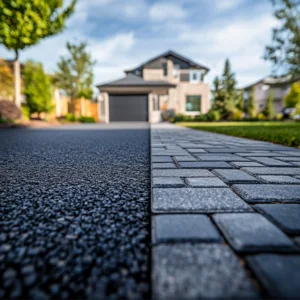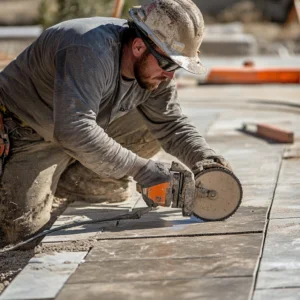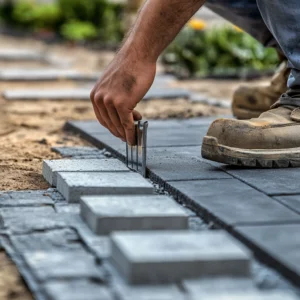Travertine pavers are a popular choice for outdoor spaces due to their natural beauty and durability. However, to ensure their longevity and preserve their appearance. And knowing how to seal travertine pavers is a big part of that.
Sealing travertine pavers not only enhances their color and texture but also protects them from stains, water damage, and other environmental factors. In this article, we will provide a step-by-step guide on how to seal travertine pavers effectively, ensuring they remain stunning for years to come.
Read as well: Travertine Pavers Around the Pool – All You Need to Know
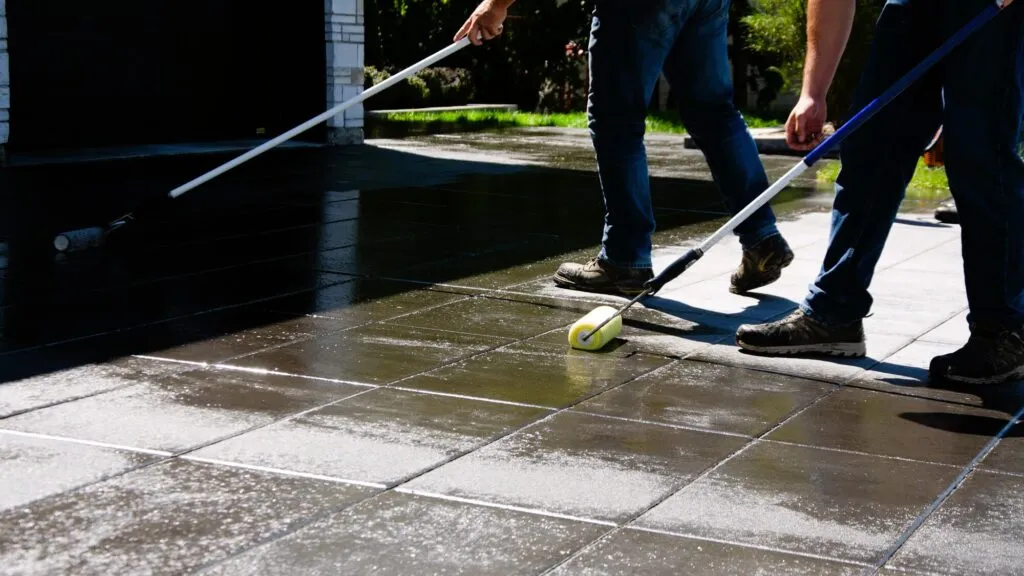
Jump to:
How to seal travertine pavers: choosing the right sealer
The first question that might arise when talking about how to seal travertine pavers is how to choose the suitable sealer according to your needs.
A quality sealer acts as a protective barrier, shielding pavers from harsh weather conditions, stains, and wear and tear. However, with numerous sealers available in the market, selecting the right one can be a daunting task.
Knowing you’re going to seal travertine pavers already narrows it down to a few options. Focus on sealers designed for travertine or natural stone and you should be golden. Still, you will have to make some choices along the way.
Sealers come in various finishes, ranging from matte to glossy. The finish you choose can significantly impact the appearance of your pavers.
Consider the overall aesthetic you want to achieve. For instance, if you prefer a natural look that doesn’t alter the color of the pavers, a matte finish would be suitable. On the other hand, if you want a more vibrant and enhanced appearance, a glossy finish can add depth and richness to the colors.
Different sealers offer varying levels of protection and durability. It’s crucial to evaluate the performance characteristics of each sealer before making a decision. Some factors to consider include:
- UV resistance: Look for a sealer with UV inhibitors to protect your pavers from fading or discoloration caused by prolonged sun exposure.
- Stain resistance: Choose a sealer that provides resistance against oil, grease, and other common stains. This feature will make maintenance easier and keep your pavers looking clean.
- Water resistance: Ensure the sealer has excellent water repellence to prevent water damage, such as efflorescence or freeze-thaw cycles, which can lead to cracks or deterioration.
- Breathability: Pavers need to “breathe” and release moisture from within. Select a sealer that allows for proper vapor transmission, preventing trapped moisture and potential damage.
Consider the ease of application and maintenance requirements of the sealer. Some sealers may require multiple coats or specialized equipment, while others are more straightforward to apply.
Take into account your DIY capabilities and the time you can allocate to the sealing process. Additionally, check if the sealer requires periodic reapplication or if it provides long-lasting protection.
To gain insight into the effectiveness of different sealers, read product reviews from reputable sources or seek recommendations from professionals in the field. Feedback from users who have used the product on similar pavers can provide valuable information about its performance, durability, and ease of use.
If you still feel unsure about which sealer to choose, consult with experts in paver sealing or seek advice from reputable suppliers. They can provide personalized recommendations based on your specific needs, paver type, and desired outcome.

Cleaning before sealing
Before thinking of sealing, you have to make sure your pavers are as clean as possible.
Start by removing any loose dirt and debris from your installation and giving it a good sweep. Then is time to do a deep cleaning using a mild detergent or specialized stone cleaner.
Dilute the cleaner with water as per the manufacturer’s instructions. Use a soft-bristle brush to gently scrub the surface, paying special attention to any stubborn stains. Rinse the pavers with clean water and allow them to dry completely before proceeding. That may take a few days, so prepare in advance.
Once the pavers are clean and dry, they are to be sealed. For more details on how to clean travertine pavers, as well as other maintenance aspects, refer to this article.
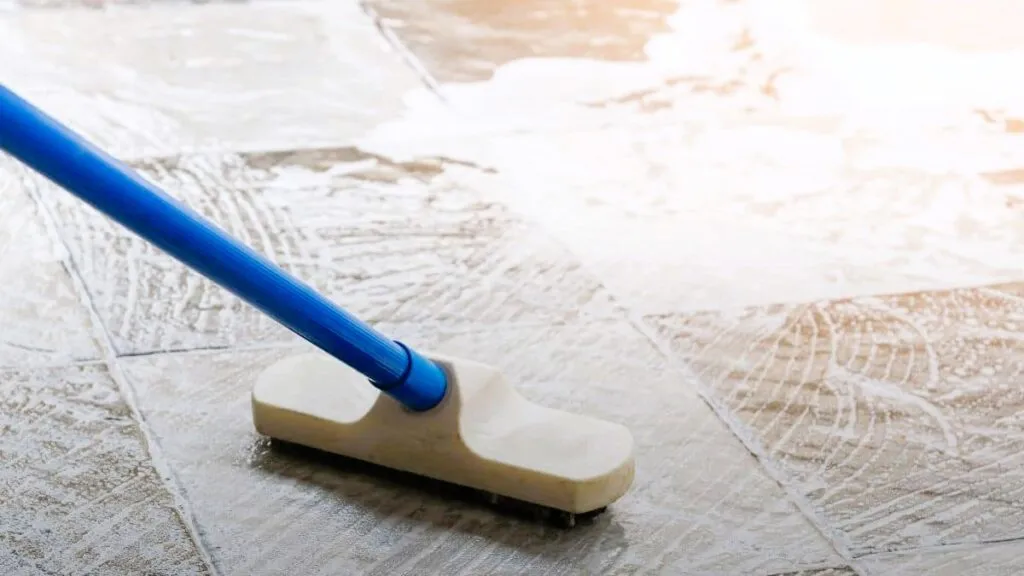
Mixing the sealer
The first order of business is to mix paver sealer. And to do that, you will need to follow the instructions provided by the manufacturer on the product label. Different brands or types of paver sealers may have specific mixing instructions, so it’s important to read and follow them carefully.
Still, we are going to give you some general steps that can help you mix paver sealer.
Select a suitable container for mixing the paver sealer. It should be clean, large enough to accommodate the sealer and any necessary additives, and have a tight-fitting lid.
Open the container of paver sealer and stir it gently with a stir stick or paint mixing paddle. This will help ensure that any settled particles or components are evenly distributed throughout the sealer.
Some paver sealers may require the addition of specific additives for improved performance or compatibility with certain surfaces. If the instructions indicate the use of additives, carefully measure and add them to the container as directed.
Slowly pour the measured amount of paver sealer into the container. Use a stir stick or paint mixing paddle to thoroughly mix the sealer and any additives.
Stir in a circular motion, scraping the sides and bottom of the container to ensure a consistent mixture. Continue stirring until you achieve a uniform consistency and all components are well blended.
Some paver sealers may require an induction or waiting period after mixing. This allows the components to react and ensures optimal performance. Refer to the product instructions to determine if an induction time is necessary and follow the recommended duration.
Remember to always wear appropriate personal protective equipment (PPE) such as gloves, goggles, and a mask when working with paver sealer. Additionally, work in a well-ventilated area to avoid inhaling fumes.
Applying the sealer
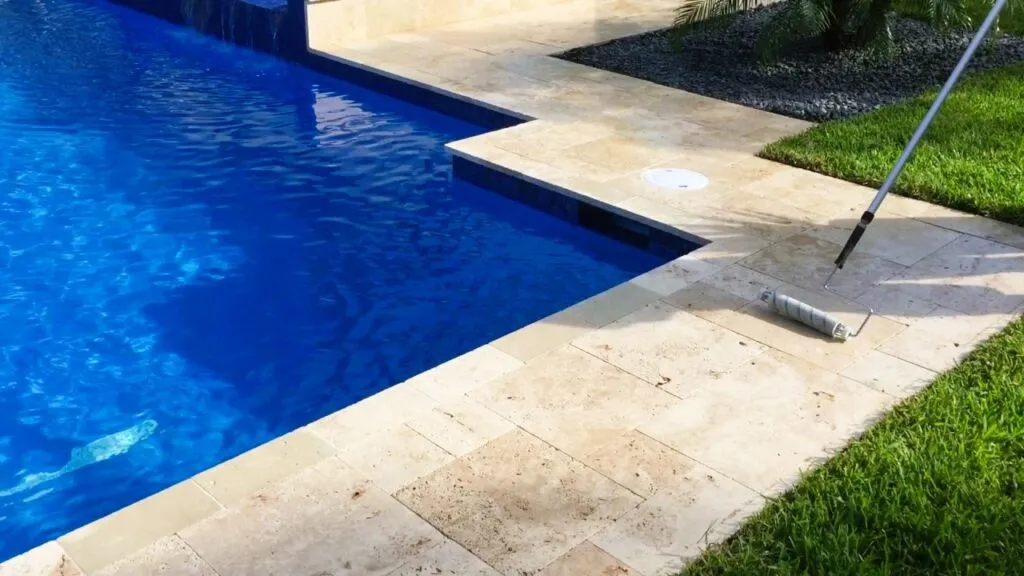
Finally, it is time to apply the sealer. But before applying the sealer to the entire surface, it’s a good idea to test it on a small, inconspicuous area of the pavers. This will allow you to ensure that the sealer gives the desired finish and doesn’t cause any discoloration.
There are two ways in which you can apply the sealer: using a sprayer or using a roller. Which is best is often indicated on the label of the product you choose.
If you’re working with a large area, it’s best to divide it into smaller sections and apply the sealer one section at a time. This will help you maintain control and ensure that the sealer doesn’t dry before you’re finished spreading it.
If you’re using a sprayer, pour the sealer into the sprayer according to the manufacturer’s instructions. Start at one corner of the area and work your way across in a consistent pattern to ensure even coverage.
If you’re using a roller, pour the sealer into a paint tray and apply it to the pavers in overlapping strokes. Make sure to apply an even coat without leaving any puddles.
After applying the sealer, allow it to dry and cure according to the manufacturer’s instructions. This usually takes a few hours to a day, depending on the type of sealer used and the weather conditions. Avoid walking or driving on the sealed surface during this time.
Some sealers may require multiple coats for optimal protection and appearance. If recommended by the manufacturer, apply additional coats following the same process as before. Allow each coat to dry before applying the next one.
Seal your travertine pavers today!
And that should do it!
Sealing travertine pavers is a vital step in their care and maintenance. By following the steps outlined in this guide, you can ensure that your travertine pavers remain protected, beautiful, and durable for years to come.
Remember to choose a high-quality sealer, clean the pavers thoroughly, and always follow the manufacturer’s instructions. With proper sealing and regular maintenance, your travertine pavers will continue to enhance your outdoor space with their natural elegance.
As you could see, sealing travertine pavers is simple enough and can be a fun DIY project. But, of course, nothing replaces professional work.
We here at JS Brick have done countless sealing jobs over our 23 years of experience in the hardscape business, and we have seen some situations where the expertise was pivotal to the success of the sealing process. After all, you never know when an unexpected situation may arise.
That’s why we always recommend finding professional hardscape contractors in your area to do that job for you. Sealing is an extremely important step, and it should be treated as such.
And if you happen to be around Sarasota County, FL, why not give us a call to provide that help for you? We would be glad to help you and add you to our long list of satisfied customers. So get in contact anytime for a free estimate and start your sealing job today!

